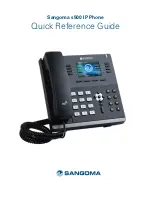
For Your Safety
101
depending on the nature of the sound, the device, the device settings and
the headphones. You should follow some commonsense recommendations
when using any portable audio device:
•
Set the volume in a quiet environment and select the lowest volume
at which you can hear adequately.
•
When using headphones, turn the volume down if you cannot hear
the people speaking near you or if the person sitting next to you can
hear what you are listening to.
•
Do not turn the volume up to block out noisy surroundings. If you
choose to listen to your portable device in a noisy environment, use
noise-cancelling headphones to block out background environmental
noise.
•
Limit the amount of time you listen. As the volume increases, less
time is required before your hearing could be affected.
•
Avoid using headphones after exposure to extremely loud noises, such
as rock concerts, that might cause temporary hearing loss. Temporary
hearing loss might cause unsafe volumes to sound normal.
Do not listen at any volume that causes you discomfort. If you experience
ringing in your ears, hear muffled speech or experience any temporary
hearing difficulty after listening to your portable audio device, discontinue
use and consult your doctor.
TIA Safety Information
The following is the complete TIA Safety Information for wireless
handheld phones.
Exposure to radio Frequency Signal
Your wireless handheld portable phone is a low power radio transmitter
and receiver. When ON, it receives and sends out Radio Frequency (RF)
signals.
In August, 1996, the Federal Communications Commissions (FCC)
adopted RF exposure guidelines with safety levels for handheld wireless
phones. Those guidelines are consistent with the safety standards
previously set by both U.S. and international standards bodies:
Summary of Contents for K10
Page 13: ...Features you will love Features you will love ...
Page 18: ...Basics Basics ...
Page 42: ...Apps Apps ...
Page 64: ...Settings Settings ...
Page 83: ...Appendix Appendix ...
Page 90: ...For Your Safety For Your Safety ...
Page 121: ......
















































